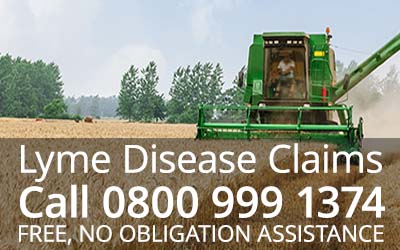
How Can Lyme Disease Be Prevented In The Workplace?
The most valuable weapon in preventing Lyme disease within a workplace is knowledge of the risks and training of the workforce to understand and suitably manage their exposure to the ticks that can cause the disease.
Employers have a duty of care to look after the wellbeing of their employees, and that includes the management of risk, so ensuring that the workforce understand:
- How Lyme disease is spread
- The risks of exposure and infection
- How employees can protect themselves
- The importance of timely reporting of any injury or illness
By implementing suitable procedures and rules the risks can be reduced by a range of methods including:
- Keeping to footpaths and avoiding long grass where possible
- Wearing appropriate clothing in tick-infested areas (long sleeved tops, long trousers – if needs be tucked into socks)
- Wearing light-coloured fabrics so that ticks are easier to see
- Using insect repellent on any exposed skin
- Inspecting yourself after any potential exposure – checking your whole body including areas such as armpits and the groin
- If you work with animals, checking and inspecting them regularly to ensure they do not introduce ticks from an infested environment, and ensuring that they are treated regularly with anti-tick medication can make them less welcoming hosts to the ticks and reduce the risk of transportation
If your workplace is static, but in a location that is likely to have a high tick population then certain measures can reduce the risk of infection, such as clearing leaf litter, regularly cutting grass and verges and other methods to reduce their habitat and hence lower the likelihood of infestation.
There are a range of insecticides that can be applied to the body when entering potentially tick-infested areas, and some that can be applied to clothing to deter the ticks from settling upon the person. Some of these insecticides can work for several days and remain on clothing even after a washing cycle, whereas there are now some clothing ranges available which are permeated with insecticide that can remain active for up to 70 washes.
By providing employees with appropriate workwear, or if needs be Personal Protective Equipment (PPE), the risk can be reduced, but only if they are trained in how to put it on properly, how to maintain it, and how to behave whilst wearing it.
Removing ticks promptly if they are identified can also reduce the risk of infection – care must be taken when removing ticks not to leave parts of their body attached to the most, as infection can still occur even after the tick has been killed or injured.
Call us now on 0800 999 1374 or click here to start your claim.

Claiming For Lyme Disease
Free Legal Advice
If you are unsure whether you can claim compensation for Lyme Disease, then call our personal injury claims team for free, no obligation advice on making a claim. They will ask you some simple questions about your condition, talk to you about what’s happened and can tell you if you have a viable claim for compensation or not. Call us free on 0800 999 1374.
Latest Lyme Disease News
Forestry Worker Claims £80,000 for Lyme Disease
A Scottish man who developed Lyme disease and became seriously ill has launched a legal claim for £80,000 against his employers for failing to do enough to protect workers from the potentially life-threatening disease.Iain MacEchern had worked for the Forestry...




